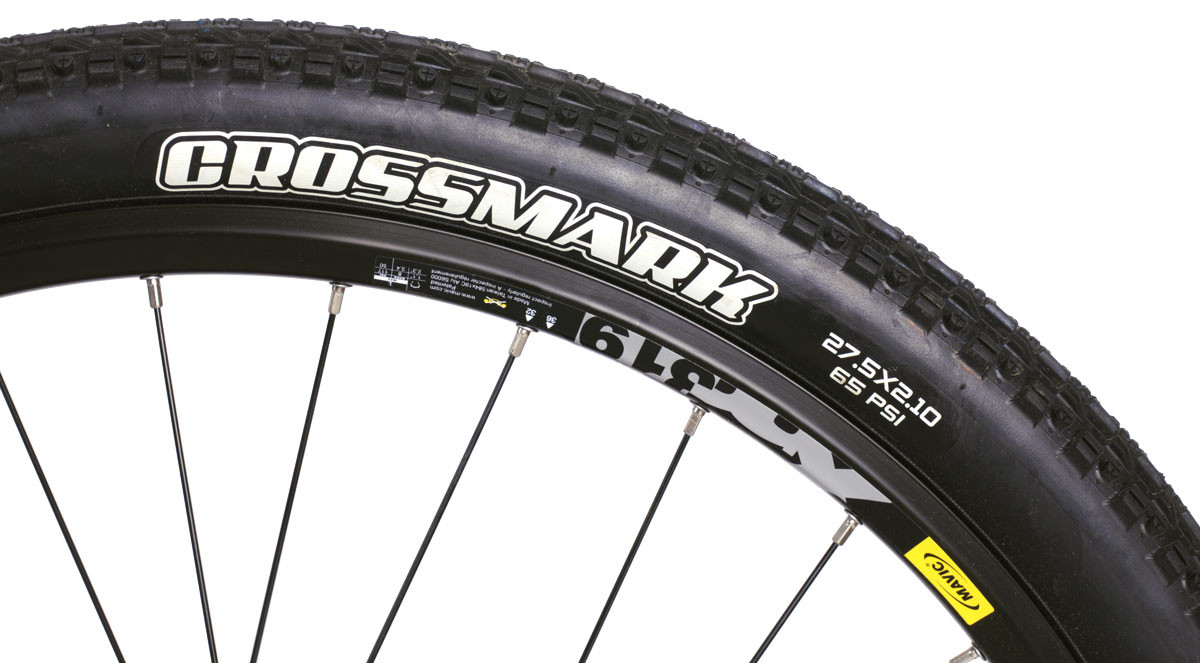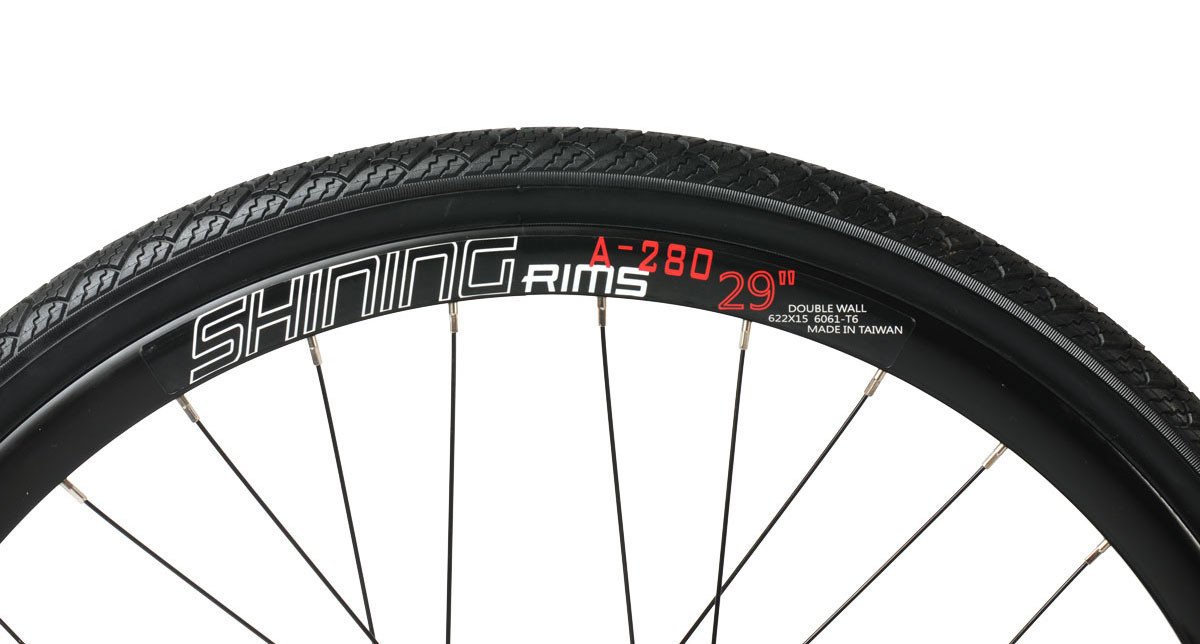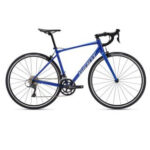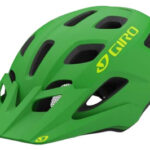Navigating the world of bicycle wheel sizes can feel like deciphering a secret code. With a plethora of options, from small wheels on folding bikes to large ones on mountain bikes, and a mix of naming conventions, it’s easy to get lost. Understanding bike wheel diameters is crucial for choosing the right bike, tires, and components for your riding style and needs. This guide breaks down the different bicycle wheel sizes, clarifies the confusing terminology, and provides a helpful Bike Wheel Diameter Chart to simplify your selection process.
Small Wheel Sizes
16-inch Wheels (ISO 305 mm)
16-inch wheels are the smallest you’ll commonly find on adult bicycles, though they are primarily used for children’s bikes. Some folding bikes adopt this size to achieve an ultra-compact fold, but this comes at the expense of ride quality. While ideal for young children learning to balance, 16-inch wheels struggle on uneven surfaces. Their small diameter means they are significantly impacted by even minor road debris, and potholes pose a considerable hazard.
Riding a bike with 16-inch wheels feels very different from a standard adult bike. The smaller turning radius and wheelbase result in more sensitive steering. These smaller wheels also require higher gear ratios to achieve comparable speeds to larger wheels, making hill climbing more challenging.
20-inch Wheels (ISO 406 mm & ISO 451 mm)
20-inch wheels are the standard for BMX bikes and are the most prevalent size for small-wheeled folding bicycles. BMX riders favor them for their enhanced maneuverability, which is beneficial for flatland and aerial tricks. However, for general cycling, 20-inch wheels share many of the drawbacks of 16-inch wheels. While slightly better at handling obstacles than 16-inch wheels, they are still more susceptible to bumps and rough terrain compared to larger sizes.
Smaller wheels necessitate specific frame geometry and often a longer handlebar stem to achieve a comfortable, upright riding position. This can sometimes worsen handling issues and introduce unwanted flex in the frame and steering column.
ISO 451: It’s important to note that there’s a slightly larger 20-inch wheel size, the ISO 451. This size is less common but appears on some racing BMX bikes and older British utility bikes. When encountering a 20-inch wheel, it’s generally safe to assume it’s the more common ISO 406 unless specified otherwise.
24-inch Wheels (ISO 507 mm)
24-inch wheels are relatively uncommon in the adult bike world, primarily found on junior mountain bikes and some BMX “cruiser” models designed for larger riders who want the BMX geometry but in a slightly bigger package. The growing popularity of youth racing and high-end components for kids’ mountain bikes is making the 24-inch junior mountain bike category increasingly relevant.
Standard Full-Size Wheel Diameters: Bike Wheel Diameter Chart
| Wheel Size (Imperial) | Wheel Size (Metric/ISO) | ISO Diameter (mm) | Common Bike Types |
|---|---|---|---|
| 26 inch | 26 inch | 559 | Classic Mountain Bikes, Some Folding Bikes |
| 27.5 inch / 650b | 27.5 inch / 650b | 584 | Modern Mountain Bikes, Gravel Bikes, Some Road Bikes |
| 29 inch / 700c | 29 inch / 700c | 622 | Road Bikes, Hybrid Bikes, Modern Mountain Bikes |
| 27 inch | 27 inch | 630 | Vintage Road Bikes (Less Common Today) |
This bike wheel diameter chart provides a clear overview of standard bicycle wheel sizes, bridging the gap between imperial and metric naming conventions and their corresponding ISO diameters. Understanding these measurements is key to ensuring compatibility and choosing the right wheels for your bike.
Exploring Standard Full-Size Wheels
26-inch Wheels (ISO 559 mm)
 Close-up of a 26-inch mountain bike tire and rim showing the tread pattern and rim detail
Close-up of a 26-inch mountain bike tire and rim showing the tread pattern and rim detail
26-inch wheels boast a rich history in cycling. Originating as the standard for American cruisers nearly a century ago, they later became the dominant mountain bike wheel size for decades. When pioneers like Joe Breeze, Charlie Kelly, and Gary Fisher built the first mountain bikes, 26-inch cruiser wheels were the only option with tires wide enough for off-road riding. As the original mountain bike standard, this size is still utilized in some high-performance folding bikes, including Montague’s Paratrooper series.
It’s important to understand that the term “26 inch” refers to the approximate outer diameter of the tire, not the wheel itself. The actual ISO diameter of a 26-inch wheel is 559 millimeters.
27.5-inch / 650b Wheels (ISO 584 mm)
 Detailed view of a 27.5 inch bike tire and rim highlighting the tire texture and rim construction
Detailed view of a 27.5 inch bike tire and rim highlighting the tire texture and rim construction
The naming of bicycle wheel sizes can be perplexing, especially when different names refer to the same size. Wheels with an ISO diameter of 584 mm were initially known as 650b. Introduced on French touring bikes in the 1960s, their slightly smaller size compared to modern road bike wheels made them suitable for small and extra-small road frames that couldn’t fit 700c wheels. The 650b designation persists in road and gravel cycling, but the mountain bike industry adopted and rebranded it.
With the trend towards larger wheels in mountain biking, 650b was repurposed for off-road use and renamed 27.5 inches. Compared to the older 26-inch wheels, 27.5-inch wheels offer several advantages, including improved roll-over capability on obstacles, a larger contact patch for better traction, and increased rotational inertia for momentum maintenance. Montague’s Paratrooper Highline and Paratrooper Elite models are pioneers as the first folding bikes to feature 27.5-inch wheels.
29-inch / 700c Wheels (ISO 622 mm)
 Assortment of bicycle wheels of different sizes, showcasing the visual difference in diameters
Assortment of bicycle wheels of different sizes, showcasing the visual difference in diameters
Here we encounter another instance of two names for the exact same wheel size! The standard modern road bike wheel, with an ISO diameter of 622 mm, is known as both 700c and 29 inches. The “700c” designation originates from a historical international tire sizing system where 700mm represented the approximate outer tire diameter, with variations like 700a, 700b, and 700c indicating different rim sizes. While other variations faded, the 622 mm rim became the standard for narrow road tires. Nearly every adult bike designed for pavement use, including Montague’s Pavement series of folding bikes, comes equipped with 700c wheels. This full-size wheel offers superior performance and ride quality compared to smaller wheel folding bikes.
Just as 650b wheels were adopted and renamed 27.5 inches in mountain biking, 700c wheels have surged in popularity in the mountain bike world, becoming known as 29 inches. The benefits of larger wheels are maximized with 29-inch (or 29er) mountain bikes. While they offer improved roll-over and momentum, some riders find the trade-off in maneuverability and turning radius less desirable. Although 29-inch and 700c wheels share the same 622mm diameter, mountain bike rims are typically wider to accommodate wider tires.
27-inch Wheels (ISO 630mm)
The ISO 630mm size, commonly referred to as “27 inch,” is largely obsolete today. However, it’s worth mentioning due to the vast number of American road bikes from the 1970s and 80s that used these wheels, many of which are still in use. The rim diameter is slightly larger than modern 700c wheels, a fact often discovered when attempting to fit a new 700c tire. Tire manufacturers still produce 27-inch tires due to the prevalence of these older wheels, so replacements are available through bike shops for those restoring vintage steel racers.
Oversized Wheels
32-inch (ISO 686 mm) and 36-inch (ISO 787 mm)
32-inch and 36-inch wheels are extremely rare, typically found on custom-built frames for exceptionally tall riders. These sizes are virtually nonexistent on production bikes. If you are significantly taller than average, custom builds might be necessary. A quick search for “Shaq Bicycle” will reveal the various custom bikes NBA legend Shaquille O’Neal has owned, all featuring massive 32-inch and 36-inch wheels that appear proportional to the frame but are significantly larger than standard sizes.


